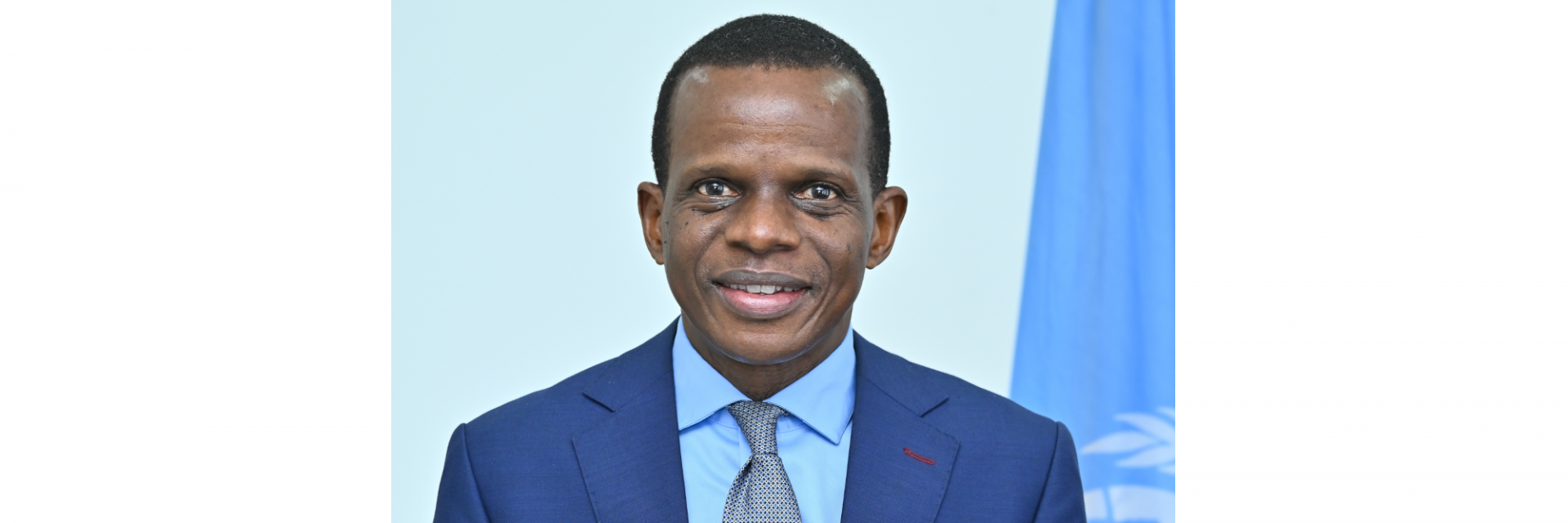Great Blue Wall High Level Event
Africa Pavilion COP 27
7th November 2022
Remarks by
M. ANTONIO PEDRO
ACTING EXECUTIVE SECRETARY, ECA
Your Excellencies, ladies and gentlemen,
Blue Economy and the Great Blue Wall initiative
Africa’s vulnerability to climate change has been widely reported. On the other hand, the continent enjoys rich natural resource endowments, offering great opportunities to build climate-resilient infrastructure, societies, and economies.
Adaptation is Africa’s primary concern, and this should be reflected in the structuring of climate finance, requiring at least 50 percent of available finance to support climate change adaption in Africa.
Africa’s oceanic spaces have been too often neglected. The Great Blue Wall initiative represents an ideal lever to raise finance and invest in ocean based adaptation.
In March 2022, the Kigali Declaration of the African Regional Forum on Sustainable Development called on African countries to support the Great Blue Wall.
The initiative has set ambitious targets to protect 2 million square kilometers of protected and conserved areas. It is evident that protection means nothing without creating linkages to livelihoods, and the Great Blue Wall aims to link its climate goals with the development of sustainable value chains to create 70 million livelihoods.
It is clear that African countries need structural transformation around their value chains- and for fisheries and other blue economy resources this means investing in more processing capacity, and addressing the infrastructure gap to empower local communities through better access to energy. By focusing on empowering coastal communities, we can achieve this in a climate smart way.
Success at COP27 will be defined by the ability dramatically upscale finance for investment in climate action- particularly adaptation.
The proposed regional blue bond innovation can provide scale for potential investors and help to reduce risk. The regional approach must also take into account the specific national fiscal and debt circumstances of each country.
The regional approach also reflects the transboundary nature of climate impacts in the region.
ECA support to the Great Blue Wall
The ultimate goal is to replicate this pilot initiative on other coasts of the continent. Within its role of promoting sustainable socio-economic development of Africa, ECA developed the Blue Economy valuation toolkit and tested it in three countries- Djibouti as a coastal country, Rwanda as an in-land country and Seychelles as an island country.
Scaling impact requires expansion of these pilot studies to the countries covered by the Great Blue Wall and provide Member States’ key stakeholders with reliable consolidated data to support sustainable investments and development related to SDG14.
In addition, under the Great Blue Wall, ECA has dedicated work to catalyze blue investment through the development of capacity building and training programs for member states to understand the market mechanism, credit rating, blue bond issuance frameworks, legal and legislative frameworks, project reporting requirements, and ESG standards.
A regional response to climate change challenges
Beyond its contribution to local economies in the form of sustainable, blue entrepreneurship, the Great Blue Wall can contribute to conserving and restoring critical marine and coastal ecosystems through mobilization of impact investors for large scale corridors and networks of projects. The Great Blue Wall thus represents a sustainable pipeline of investments.
Recognising that increasing debt levels may be a barrier to this form of financing, a regional blue bond could also provide a means of refinancing portions of member countries more expensive debt. New bond issuances that both refinance older expensive debt and provide new liquidity can provide the framework for larger scale debt for climate conversions, and thereby address some of the concerns over high individual transaction costs.
Scaling up existing projects from the national level to the East-Africa regional level first and to the continental level represents a game changer. It provides a framework to channel investment into conservation and creation of livelihoods. It can provide predictable flows of investment into coastal adaptation.
Most important of all- it can change the lives of people living in coastal communities.
And this is the type of intervention that matters most.
Before concluding, I would like to present our sincere appreciation to the Government of the Republic of Seychelles for bringing us together for this event, as well as all the other partners supporting this transformative intervention. Our thanks also to IUCN for putting in place the building blocks.
Thank you for your attention and for the support for this initiative.

